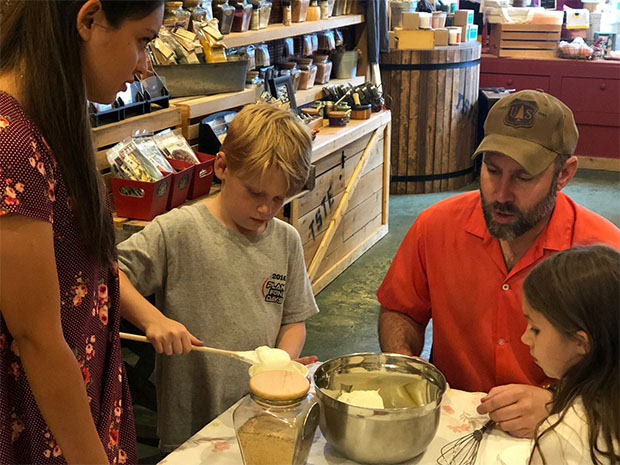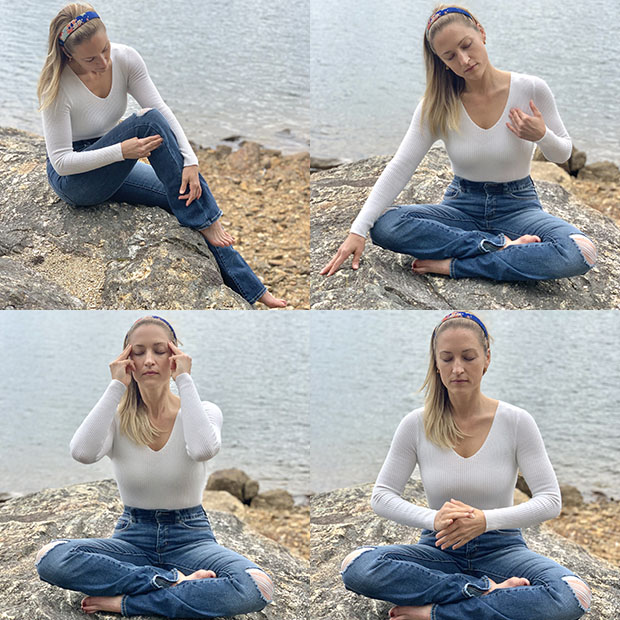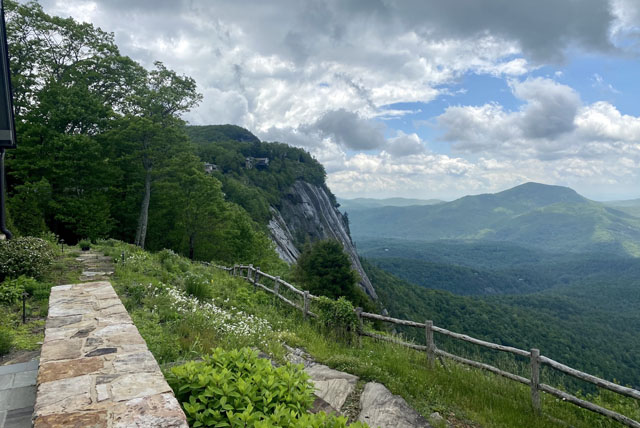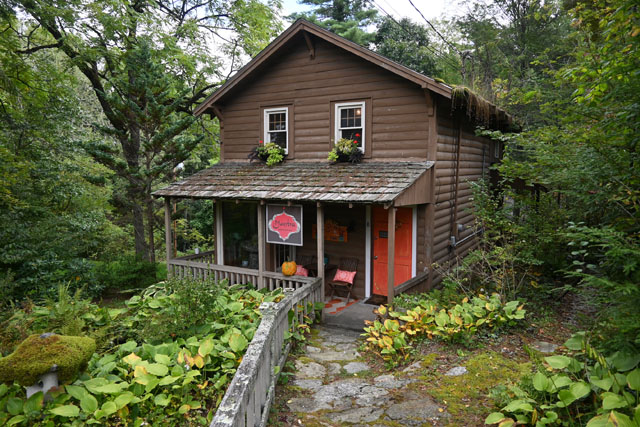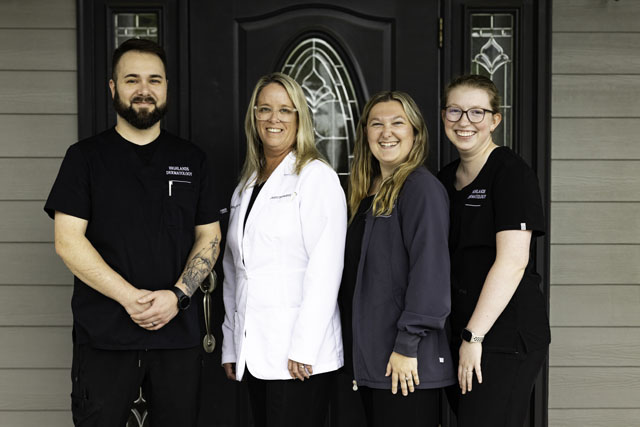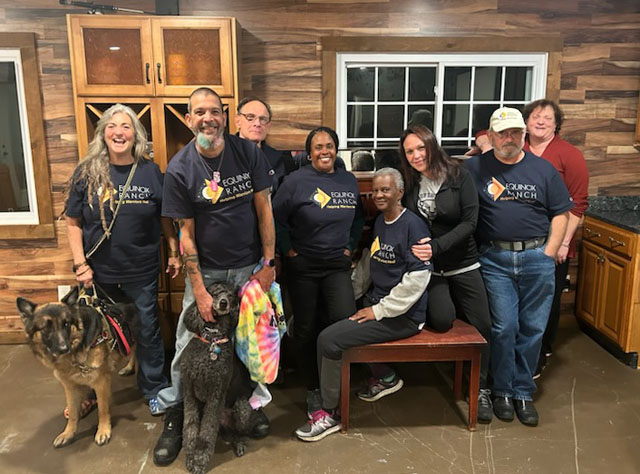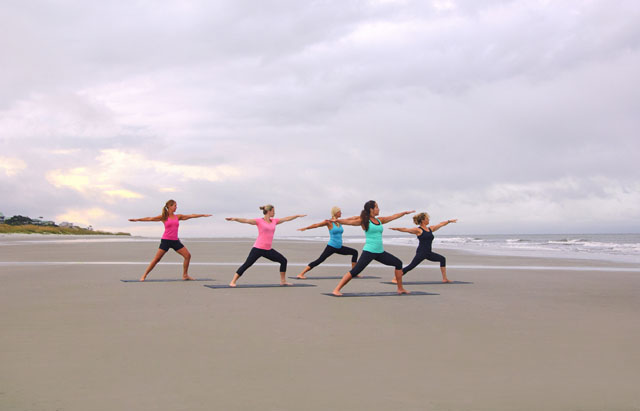Releasing Tension
04 Apr 2021
Ashby Underwood and Chad Garner of Yoga Highlands are on a mission to teach people on the plateau how to heal from chronic pain.
By Kat Ford
Photos by Tracy Mendy
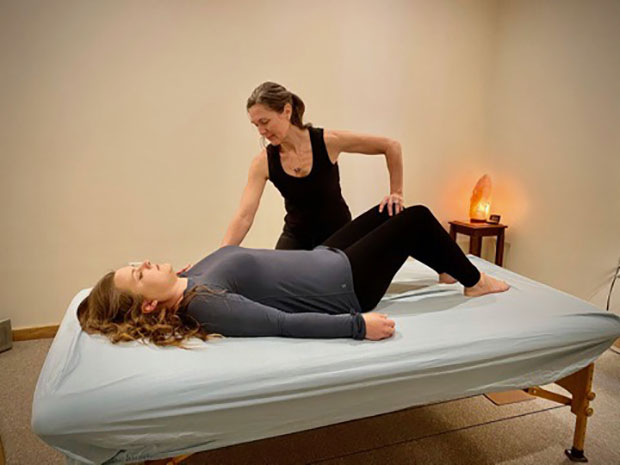
“Fascia responds to a broken heart just like a broken leg and working with the fascia helps heal both the emotional and physical.” Ashby Underwood’s words rang through my head as I lay on the bodywork table. I had interviewed Ashby over the phone a few days earlier about Rolfing, “the work” I was now in the process of experiencing. During my drive into Yoga Highlands, I wondered if she would identify a 20-year-old college injury of a dislocated fibula. In our interview, Ashby explained a ten-step series of working through a client’s unique structure and posture. “The series gives me a sense of order to work with a person’s vastness,” she said. By evaluating my posture, how I sit, stand and walk, she was confident that she could help me pinpoint the root cause of a series of interconnected pulling and strained tissues.
It took less than two minutes of watching me stand and walk during the beginning of our session for Ashby to ask if I had ever had an ankle injury. Laying on the table as she worked with her hands, she asked, “Were you under a lot of stress when you were sixteen?” In a reassuring voice, she added, “maybe this won’t be your Achilles’ heel for much longer.” My mind shot back to our interview a few days earlier and the statement about emotional and physical pain. I did experience a deep pain when I was sixteen, but not physically. It was my metaphorical Achilles’ heel that was damaged emotionally, with my first dose of jadedness in student leadership. The emotional scar tissue of that event was enough to change my desired career path from law to the arts.
What is now called Rolfing was developed by Ida Pauline Rolf, who had a Ph.D. in biochemistry from the College of Physicians and Surgeons of Columbia University and conducted research in organic chemistry at the Rockefeller Institute. Structural Integration, a form of bodywork emerged that focuses on a connective tissue throughout the body known as fascia. Dr. Rolf recognized that the body was an interconnected network. She believed that by working with gravity and understanding the organization of the human form, damaged tissue could be decompressed, rehydrated and oxygenated, releasing tension. Rolf practitioners are licensed under state massage laws, and it is up to the client how light the practitioner should work based on comfort level. “Healthy tissue does not hurt,” says Underwood, “each client has a unique body; when you are balanced, you don’t have to fight the gravity field.”
The desire for balance drove Ashby and her husband, Chad Garner, to offer Rolfing to their clients starting in 2001. Ashby and Chad both learned what practitioners refer to as “the work” from teachers that studied directly under Dr. Rolf. Clients can expect a 70-minute session in a private room in the back of the beautifully remodeled Yoga Highlands studio. Comfort is key. An interactive process that feels somewhere between a one-on-one yoga class and a massage, assessment and bodywork is completed in a warm room on a bodywork table. Clients can stay fully clothed or dress for a workout. “Our desire is to give people hope through mobility - to give them their movement back,” says Underwood, noting that she encourages plateau residents with chronic pain to not give up. “Rolfing strives to make better order of the body,” says Ashby. “Osteopathy is a form of medicine that has been around since the 1800s,” but research science is still unpacking the mysteries that fascia holds, “there is a place where the mysticism meets the science,” smiles Underwood.
828.526.8880

